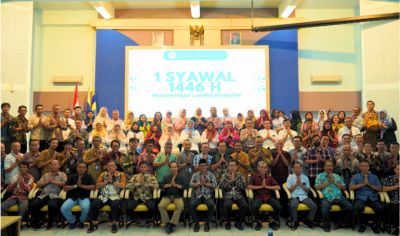Title: THE INFLUENCE OF MEDIA REPORTING, PERSONAL CHARACTERISTICS OF RISK-TAKING AND PERCEPTION OF RISK ON INTENTION TO VISIT A TOURISM AREA
Author: HILYATUZ ZAKIYYAH
Affiliations : Master of Management Science Program, Faculty of Economics and Business, Universitas Airlangga , Surabaya, Indonesia
Publisher: Universitas Airlangga
Abstract
The state of Indonesian tourism, which prioritizes natural attractions, has negative consequences. Recently, Indonesia has experienced many natural disasters, such as earthquakes, tsunamis, volcanic eruptions, and others. Marketers of tourist areas in Indonesia need to know what factors are related to marketing these risky areas, especially with the increasingly widespread reach of the media which allows news about disasters or threats of disasters to spread more quickly to consumers and sometimes become more sensational. In tourism marketing, intention to visit is a very important variable to determine the success of marketing a region. The researchers examined various determinants of consumer visit intentions, both external and internal factors. This research examines the role of risk perception which is influenced by the media and also the risk-taking personality traits which are internal factors of consumers. Based on the above phenomena, a research question was then formulated, what is the role of risk perception and risk-taking personality traits in influencing intention to visit? How do negative and positive reports in the media about an area influence intentions to visit the area being reported? A quantitative approach to the type of causality experiment was used in this research. The data used is primary data obtained from 180 participants. The samples/participants used were FEB Unair students. Meanwhile, the analysis technique uses multiple regression and difference tests. The results of multiple regression analysis show that risk perception and personality traits have a significant role in intention to visit only when negative news occurs, whereas in normal or positive news conditions, these two variables do not play a significant role. Then the results of the difference test between the influence of positive and negative news show that negative news produces a more significant influence on risk perception and intention to visit than positive news. A about disasters or threats of disaster spread more quickly to consumers and sometimes become more visible. sensational.. In tourism marketing, the intention to visit is a very important variable to determine the success of marketing a region. The researchers examined various determinants of consumer visit intentions, both external and internal factors. This research examines the role of risk perception which is influenced by the media and also the risk-taking personality traits which are internal factors of consumers. Based on the above phenomena, a research question was then formulated, what is the role of risk perception and risk-taking personality traits in influencing intention to visit? How do negative and positive reports in the media about an area influence intentions to visit the area being reported? A quantitative approach to the type of causality experiment was used in this research. The data used is primary data obtained from 180 participants. The samples/participants used were FEB Unair students. Meanwhile, the analysis technique uses multiple regression and difference tests. The results of multiple regression analysis show that risk perception and personality traits have a significant role in intention to visit only when negative news occurs, whereas in normal or positive news conditions, these two variables do not play a significant role. Then the results of the difference test between the influence of positive and negative news showed that negative news produced a more significant influence on risk perception and intention to visit than positive news.
Keywords: RISK TAKING TRAIT; RISK PERCEPTION

























